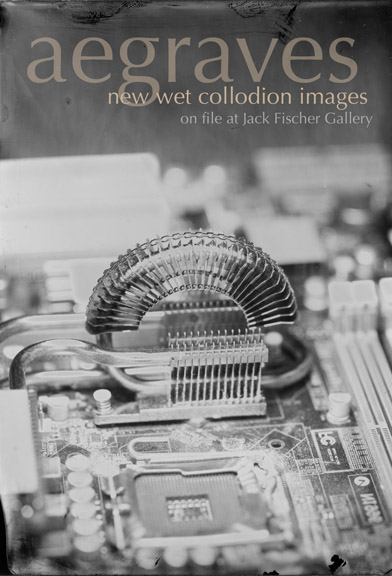
Wet collodion is a stunning process, rich in subtlety and texture, prone to accidents, and almost overwhelming with glorious levels of detail. It is temperamental, demanding, and requires each image to be exposed and processed while the emulsion is still wet, which makes it largely a studio process. As a lover of landscapes and architecture, being limited to the studio takes me out of my comfortable habits and forces me to develop new ones.
In 2009, I built a camera from simple materials, and began making ferrotypes at home. I needed to build on what I'd learned in a weekend workshop and through practicing at a rental darkroom. I had some early successes, which thrilled me, plus countless disasters. I knew I could get a wider range of results with further practice and experimentation. After suffering a long period of recurring logistical problems, I returned to collodion at the very end of 2011 with a list of new experiments to learn from.
I decided to:
- set aside my small aperture habits;
- set aside the development methods I had been taught;
- tinker with (very old) developer recipes;
- embrace still-life; and
- share the beauty of things my friends rarely look at closely.
The results of my new experiments have been thrilling, and have taken me farther than I was told sodium thiosulfate-fixed plates can go.
I am developing several bodies of work to capture contemporary subjects in collodion, a process well-suited to the precise details of modern, machine-made things.
My 2012 ferrotypes feature recent artifacts of the computer age; a separate body of work examines glass bottles.
Copyright © 2012 - 2020 A. E. Graves